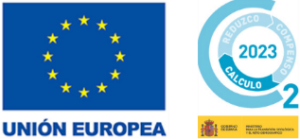Potable water is water that is fit for human consumption and, therefore, complies with the quality standards established for this purpose by various governmental bodies.
Today, the origin of water for this purpose can be:
Applications
POTABILIZATION
- Surface (rivers, runoff)
- Subterranean (well water)
- From the ocean
Potable water is a scarce natural resource; only 0.025% of the earth’s water is potable and its use is widespread in both industry and daily life.
Therefore, it is essential that both public institutions and private companies invest in water potabilization to ensure that all people have access to this vital resource.
What is water potabilization?
Water potabilization is the process by which we treat water so that it can be consumed by humans without posing a health risk.
When we talk about potable water, we are referring both to water for drinking and for food preparation in the agri-food industry.
Potabilization consists mainly of eliminating components that are unhealthy for people, including: heavy metals, suspended solids of various kinds, bacteria and viruses that may be present in the water.
In short, it means eliminating any component that could pose a risk to human health.
How is water made potable?
Water potabilization takes place in water facilities that are commonly known as drinking water treatment plants or DWTP (Drinking Water Treatment Plant).
The water potabilization process can vary depending on the chemical and physical conditions of the water to be purified, meaning:
- If the chemical parameters of the water to be treated (salts and heavy metals) are within the legal limits established by the regulations in force in each country, the treatment usually involves a process of separation of certain physical components of the water (solids and colloidals), which are then precipitated, before being filtered and disinfected with sodium hypochlorite, chlorine dioxide, chlorine gas, ozone, or ultraviolet radiation.
- If the chemical parameters of the water to be treated are not in compliance with the regulations in force in each country, we must carry out an additional subsequent treatment.
This tends to be more complicated and costly, and usually involves the employment of reverse osmosis systems. This is often the case, for example, with water from groundwater wells, seawater, and even sometimes water from reservoirs or swamps.
Stages of the potabilization process
As we have already mentioned, their is a variety of diverse potabilization process, the use of which depends on the nature or origin of the water. The different processes typically used in potabilization are explained below:

- Pretreatment
The first step is to remove large solids. This step is usually accompanied by an initial disinfection with some type of oxidant or even the addition of powdered activated carbon for the reduction of certain contaminants.
- Coagulation-Flocculation
This step is not always necessary, it will depend on the origin of the water and its suspended solids content and turbidity levels.
This phase of the potabilization process involves adjusting the pH by adding acids or bases, so that coagulant and flocculant agents can be added later.
- Decantation
This process is linked to the previous one, suspended particles contained in the water are separated by gravity in the decanter.
After the above processes, in the filtration process, water is passed through a gravity or pressure filter bed (sand filters, flint-anthracite, zeolites, etc.) or an ultrafiltration system to remove less dense solids.
As mentioned above, depending on the nature of the water, it is sometimes necessary to finish the treatment with equipment capable of eliminating salts and heavy metals present in the water that are not eliminated by the previous procedures. The most common system for eliminating these components is usually reverse osmosis. In these systems we usually eliminate an average of 98% of salts present in the water.
This part of the process is not always necessary, it is linked to reverse osmosis. By removing 98% of the salts from the water, we obtain a product low in pH and mineral salts, which can be harmful to health.
Therefore, after reverse osmosis it is necessary to remineralize the water with chemicals such as sodium bicarbonate, calcium chloride, calcium carbonate, or others.
Finally, sodium hypochlorite, chlorine dioxide, chlorine gas, ozone, or ultraviolet radiation is added to eliminate any bacteria or viruses.
- Analyses
Once the process has been completed at the DWTP, it is essential to perform various water analyses to ensure that the potabilization process has been successful, and that it therefore complies with the sanitary criteria for drinking water quality in force in each country.
J. Huesa, specialists in water potabilization
J. Huesa has a multidisciplinary work team that has all the necessary resources to meet the drinking water treatment needs of any area, including the study, design, manufacture, assembly, start-up, operation, and maintenance of facilities.
All this in compliance with RD 140/2003, which establishes the sanitary criteria for the quality of water for human consumption.











